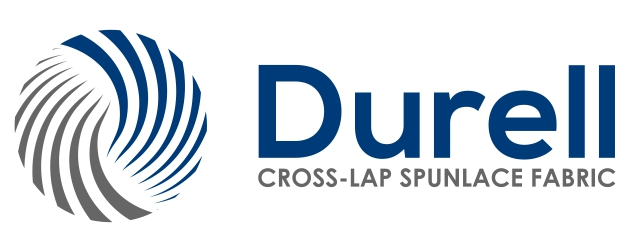Mogul Tekstil San. ve Tic. A.S.

Address
Mogul Tekstil San. ve Tic. A.S.
Baspinar 2. OSB 83228 Nolu Cadde 8 27120
Gaziantep
Türkiye
Telephone+90 342 337 14 99
Fax+90 342 337 14 13
Discover more from us
Follow us on
About us
Mogul was founded in 1997 to produce and market nonwoven and composite products.
Mogul offers a vast array of nonwoven products and composites to their customers which include:
Spunlace (Parallel-laid & Cross-lapped)
Microfilament (PET/PA6)
- Multilobal
- Hybrid mix
Polypropylene Spunbond
Polyester Spunbond
- Mono
- Flatbond with Round and Trilobal shaped fibers
- Pointbond with Round and Trilobal shaped fibers
- Bicomponent (PET/CoPet)
- Flatbond with Round and Trilobal shaped fibers
Meltblown - SM, SMS, MMM
Extrusion coated laminated fabrics
Converted Composites made from nonwovens and other composites
Major markets served include: Air and Liquid Filtration, Wipes, Building/Construction, Spill Control, Coating Substrates, Bedding / Furniture, Packaging, Automotive, Landscape, Agriculture, Hygiene-Medical, Cable wrapping, Fabric Softener Sheets.
Mogul recently operates:
- Two parallel Spunlace Lines (3.2m widths)
- One cross lap spunlace line (3.2m widths)
- Four PP Spunbond lines (1.6, 2.2, 2.5, 3.2m widths),
- Two PET Spunbond (monopet) lines (3.2m widths),
- One Bicomponent PET spunbond line (3.65m widths)
- One Microfilament PET/PA6 line (3.0m widths)
- Six meltblown lines (1.6m widths).
- Other capabilities include: an extrusion coating line, wide width welding machine, PEVA film machine, and a converting facility to produce spill control products.
Mogul headquarters and first plant are located in Gaziantep with an area of 25,000 sqm. A second site was built in Istanbul in 2002 for domestic sales and warehousing. A third production plant of 20,000 sqm was built in Gaziantep in 2007. A fourth production site 56,000 sqm has been acquired in Luleburgaz, 100km from Istanbul, and the initial plant of 10,000 sqm is under roof. Approximately 470 people are employed at the company’s three operating sites.
Our product groups
- Nonwovens
- Functional Apparel Textiles
Keywords
- microfilament
- spunbond
- meltblown
- spunlace
- bicomponent
Our Products
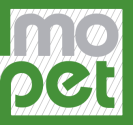
MOPET (MONOPET SPUNBOND)
Mogul’s PET spunbond consists of extruding continuous fibers onto an endless belt and then bonding with either point bonding or flat thermal bonding.
Mogul PET spunbond is available with either round or trilobal shaped fibers.
Mogul is among very few companies that can provide a fine fiber polyester spunbond. Many companies have difficulty with spunbond polyester due to its comparatively difficult processing as related to spunbond polypropylene.
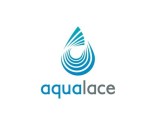
AQUALACE (PARALLEL-LAID SPUNLACE)
Spunlace technology is hydroentangled bonding of a carded web. Basically, a carded web is formed from various fibers and then the formed web is entangled (bonded) by streams of high pressure water jets. Spunlace is a growing technology in the nonwovens field and has become the preferred fabric for wipes. Mogul has 2 parallel laid lines.
Parallel laid is the technology where fibers are laid in machine direction so have less Tensile in cd direction and mostly used for wipes and hygiene applications.
FSC, PEFC AND OEKO-TEX CERTIFICATES ARE AVAILABLE
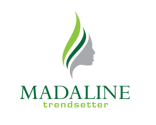
MADALINE (BICO MICROFILAMENT HYDRO-ENTANGLED FABRIC)
MADALINE® Bico Microfilament Hydro-entangled Fabric.
Madaline uses state-of-the-art patented bico technology with unique filament designs that are sheared and subjected to high pressure water jets to simultaneously fibrillate and entangle and consolidate the microfilaments.
Microfilaments are up to 100 times thinner than a human hair which is the key to Madaline's unique properties.
Its dense structure provides very good barrier and filtration properties. And thanks to microfilaments it is very absorbent, but quick to dry, and breathable (good moisture management) and washable. It also exhibits very good thermal insulation, wind resistance and UV protection.
Madaline’s properties make it uniquely applicable for processes such as finishing, dyeing, printing, cutting and stitching just like any traditional textile. This unique technology provides very smooth fabric hand that is closest to textiles with excellent dye capability and durability.
This technology uses 2 different filament shapes either in form of’’ hybrid Mixed Media” or ‘’multilobal’’ form which provides:
- Higher tensile and tear strength (create a rip-stop)
- Higher permeability
- Lower energy costs
- No delamination as in multiple beam systems
Madaline® fabrics can be used for a wide range of different applications such as;
- Clothing (sportswear,jeans, leisure wear, uniforms and workwear)
- Home textiles
- Industry
- Digital large-format printing media for signs and advertising and printed labels
- Mattress covers (anti-allergy and dust mite properties)
- Dry wipes and towels (sports towels, industrial cleaning cloths
- Filtration
- Technical packaging
- Sun protection (tents, shelters, awnings, truck covers) and window blinds
- Coating substrates and synthetic leather backing
- Wall covering
- Automotive applications (interior seat covers)
- Acoustic insulation for cars and building applications
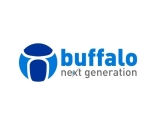
BUFFALO (BICOMPONENT PET SPUNBOND)
Bicomponent Polyester Spunbond technology is a polymer based technology which consists of a core and sheath component in each fiber where the core is PET and sheath is CoPet. For the trilobal shaped fibers the CoPet is in the tips of the polymer lobes. The presence of CoPet in each fiber allows fiber to fiber bonding. As compared to standard flat bond PET spunbond, it has higher CD tensile and abrasion resistance and higher internal bonding. Mogul Bico PET is a unique and premium product because of a very limited industry technology and a very limited number of suppliers.

DURELL (CROSS-LAPPED SPUNLACE FABRIC)
Spunlace technology is hydroentangled bonding of a carded web. Basically, a carded web is formed from various fibers and then the formed web is entangled (bonded) by streams of high pressure water jets. Spunlace is a growing technology in the nonwovens field and has become the preferred fabric for Wipes but also growing in technical and durable applications.
Crosslapping gives more strength to the fabric and the MD/CD ratio will be very close to 1:1. The difference to parallel spunlace is that crosslapper equipment will form the web by laying down the carded fiber at a 90 degree angle to the belt direction, with a back and forth motion over the width of the belt. By varying the belt’s speed, the web’s fiber orientation is adjusted including the web’s thickness.
End Uses:
- Artificial leather backing
- Automotive (headliners and other apps)
- Dry Wipes
- Medical
- Filtration
- Wet Wipes
- Coating substrates
- Depilation pads
- Shoe components
- Building material




